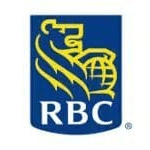On FTP Workshop
In 2011, I attended a Risk and Profitability Management Workshop organized by AMIFs (now known as FMS) to present what I had learned about FTP early in my career and learn more about industry best practices. While I attended several presentations during the two-day event, I was most impressed by the one given by David Green. I came away with some great insights into the fundamentals of FTP and approaches to modeling deposit behaviors (I’ll always remember learning about the extreme stickiness of Hawaiian deposits). David, in turn, attended my presentation; since then, we have served as mutual sounding boards on good and bad FTP practices.
Over the years, the scope of my responsibilities has expanded, requiring me to enhance my understanding of the practice of FTP; this includes the need to provide accurate and well-informed pricing guidance to lenders and deposit gatherers and the need to develop and manage economically-robust FTP methodologies for products which require behavioral models, such as NMDs. During this time, I have had the opportunity to present at several workshops David has hosted in New York, Toronto and London. At each of these, I have learned something new from him that I was able to take back and put into practice at my bank. Be it theoretical principles, regulatory considerations or the need to avoid poor FTP practices he has observed in his consulting and advisory work, David is always eager to share his insights to help financial institutions address their FTP-related challenges.
With the increasing pace of change in the banking industry, new regulatory requirements and rising rates in North America, David’s lectures and advisory services are more valuable than ever, so in June 2018, when my bank held its first ever FTP Conference, we asked David to chair the event. We brought together stakeholders from across the enterprise, including the lending and deposit gathering business units, finance, accounting, performance management and corporate treasury, for a highly-interactive, two-day event. All aspects of FTP were covered, from theory and fundamentals to management of the mismatch center and the transfer pricing of liquidity and contingent liquidity (the latter topics were of particular interest to our capital markets group). David’s engaging style and an extremely interested audience produced an incredibly valuable dialogue around the theory and practice of FTP.
The feedback from the FTP Conference participants was nothing short of excellent. Several product managers have reported that the workshop has positively influenced their decisions around which deposit products to promote and how they will price and manage them to maximize their value to their business units AND to the bank. Other managers have indicated they now have a greater appreciation for the risks that corporate treasury must manage and why it is important that these risks be accurately reflected in the FTP rates they face.
This feedback evidences that the FTP Conference was a huge success and that the time and effort that went in to organizing it was absolutely justified. Many thanks to David for the great value he has brought to me and to my bank. I look forward to our continuing dialogue.

 I, along with my staff, have had the fortune of attending three of David's public workshops. Our company has evolved into an active and successful user of FTP, and David’s teachings and wisdom have been key to what we have achieved.
I, along with my staff, have had the fortune of attending three of David's public workshops. Our company has evolved into an active and successful user of FTP, and David’s teachings and wisdom have been key to what we have achieved. 







